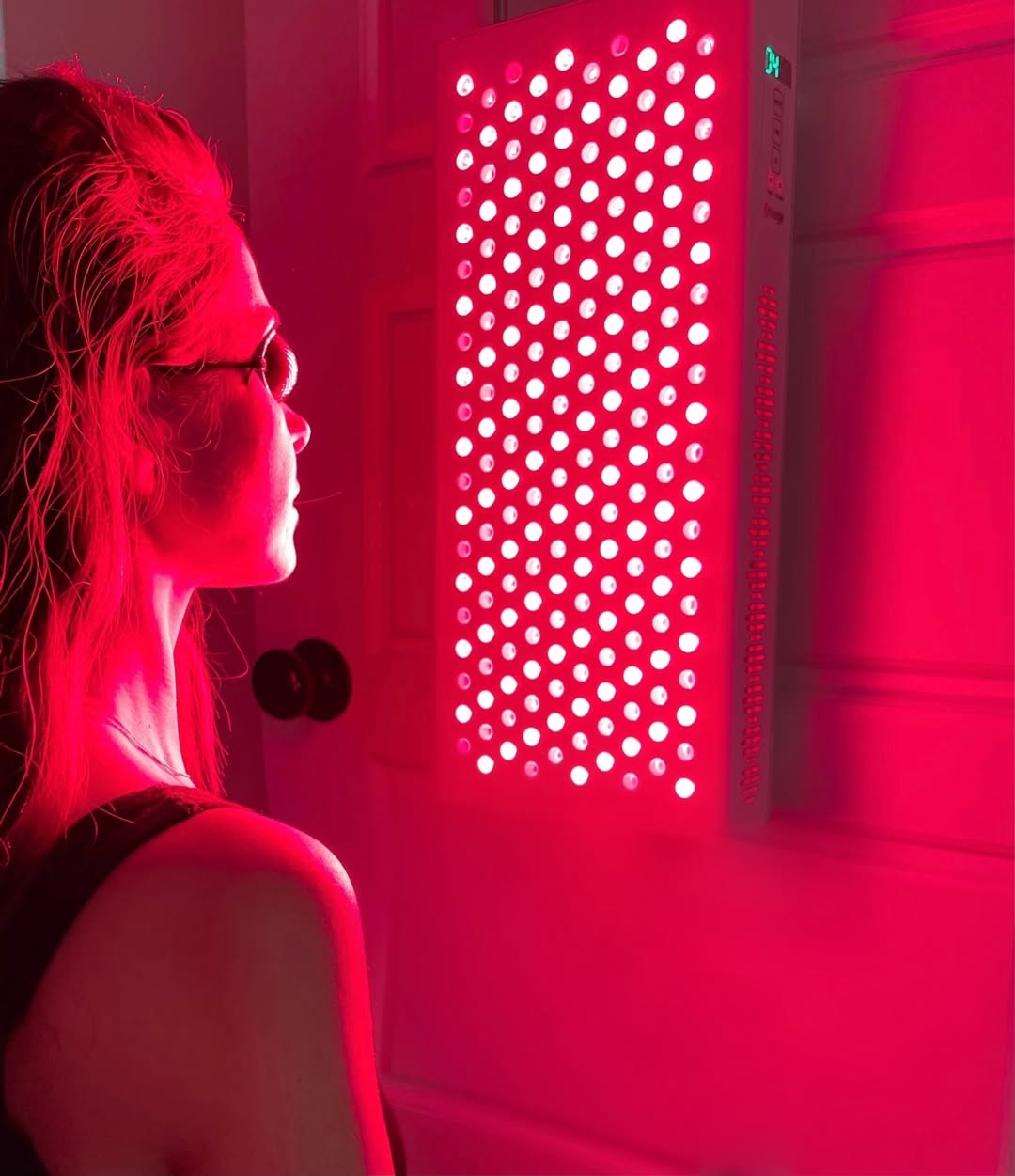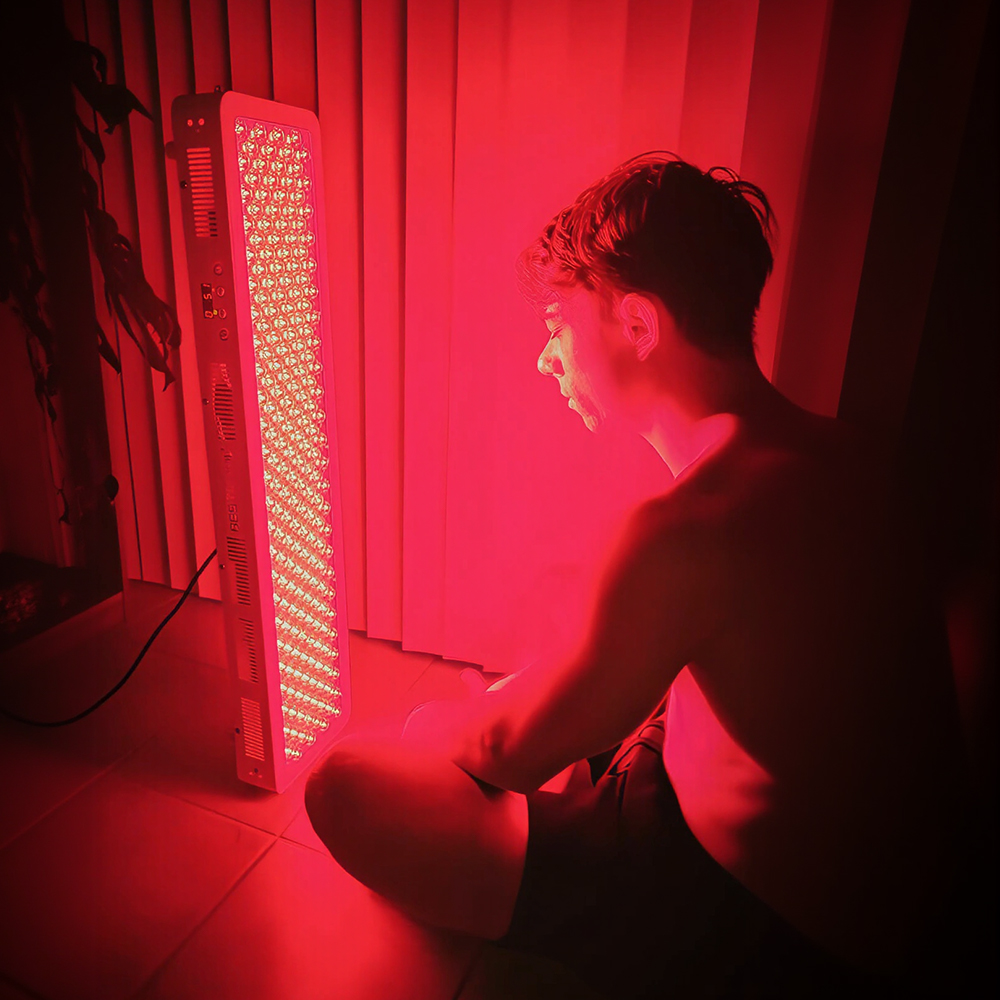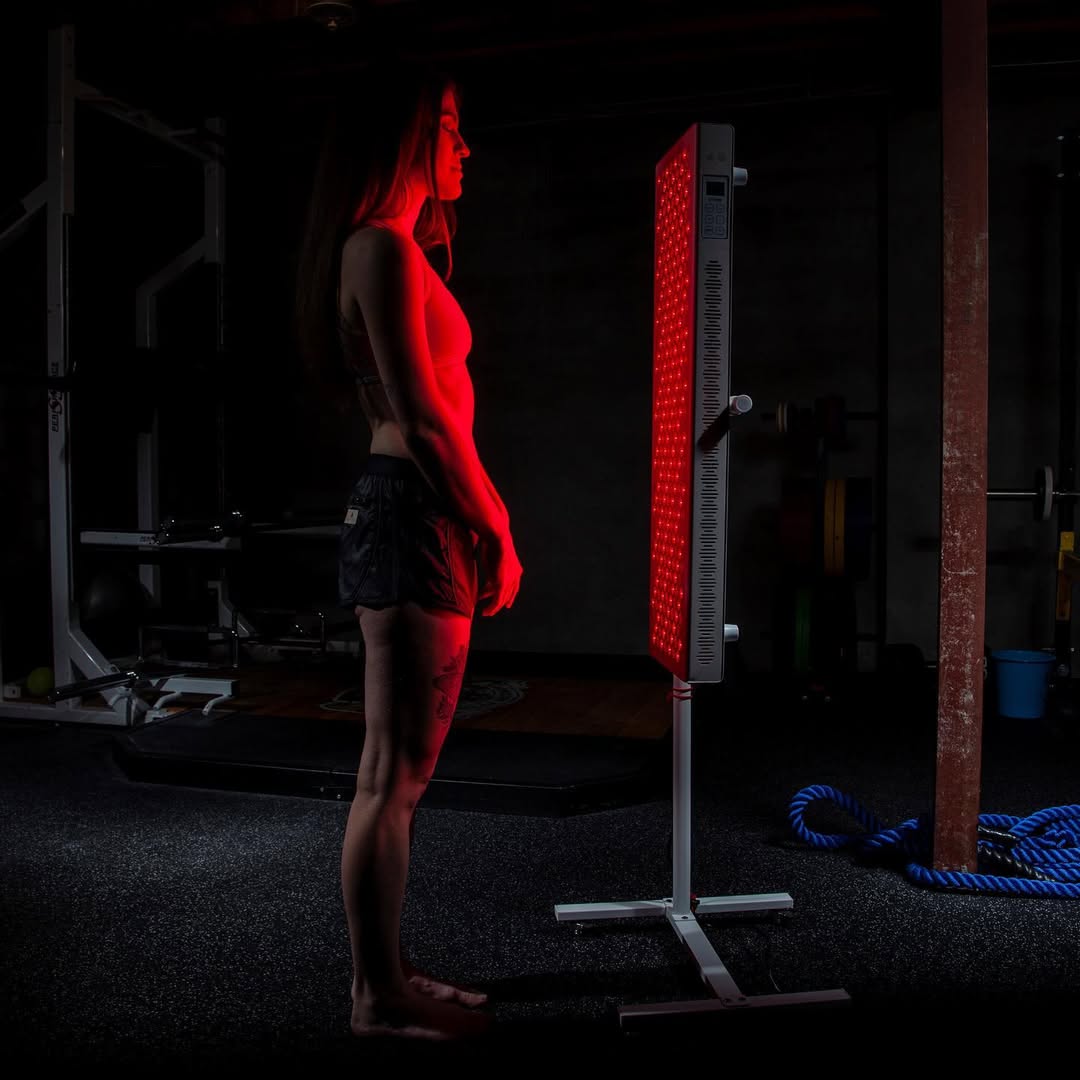![]() Free Shipping
Free Shipping ![]() Buy Now, Pay Later
Buy Now, Pay Later ![]() Eligible
Eligible
Red Light Therapy for Hyperhidrosis: A Comprehensive Guide to Natural Sweat Reduction

Excessive sweating, medically known as hyperhidrosis, affects millions of people worldwide. This condition can be embarrassing, uncomfortable, and even debilitating in severe cases. While traditional treatments like antiperspirants, medications, Botox injections, and surgery exist, many individuals seek natural, non-invasive alternatives to manage their symptoms.
One such promising solution is red light therapy (RLT), also known as low-level laser therapy (LLLT) or photobiomodulation (PBM). Emerging research suggests that red light therapy may help regulate sweat production, reduce inflammation, and improve skin health—making it a potential game-changer for hyperhidrosis sufferers.
In this 3000-word guide, we’ll explore:
- What hyperhidrosis is and its underlying causes
- How red light therapy works on a cellular level
- Scientific evidence supporting RLT for excessive sweating
- How to use red light therapy for hyperhidrosis effectively
- Comparing RLT with other treatments
- Real-life success stories and expert opinions
By the end, you’ll have a clear understanding of whether red light therapy could be the solution you’ve been searching for.
Chapter 1: Understanding Hyperhidrosis – More Than Just Sweating
What is Hyperhidrosis?
Hyperhidrosis is a medical condition characterized by excessive sweating beyond what’s necessary for thermoregulation. It commonly affects the:
- Palms (sweaty hands)
- Feet (sweaty feet)
- Underarms (axillary hyperhidrosis)
- Face and scalp
For many, sweating occurs even in cool environments or without physical exertion, leading to social anxiety, skin irritation, and a reduced quality of life.
Types of Hyperhidrosis
- Primary (Focal) Hyperhidrosis
- No underlying medical cause
- Often genetic, starting in adolescence
- Affects specific areas (hands, feet, underarms)
- Secondary (Generalized) Hyperhidrosis
- Caused by an underlying condition (e.g., diabetes, thyroid disorders, menopause, infections, or medication side effects)
- Requires treating the root cause
Why Does Excessive Sweating Happen?
Sweating is controlled by the sympathetic nervous system, which triggers sweat glands (eccrine and apocrine glands) to produce moisture. In hyperhidrosis, these glands overreact to stimuli, leading to constant, uncontrollable sweating.
Traditional treatments include:
- Antiperspirants (aluminum chloride) – Block sweat ducts but can irritate skin
- Iontophoresis – Uses electrical currents to reduce sweating (effective but time-consuming)
- Botox injections – Temporarily paralyze sweat glands (expensive, requires repeat sessions)
- Surgery (ETS – Endoscopic Thoracic Sympathectomy) – Permanent but carries risks like compensatory sweating
Given these limitations, red light therapy offers a non-invasive, drug-free alternative worth exploring.
Chapter 2: Red Light Therapy – How It Works for Hyperhidrosis
What is Red Light Therapy?
Red light therapy (RLT) involves exposing the skin to low-wavelength red and near-infrared (NIR) light. Unlike UV rays, these wavelengths penetrate deep into tissues without causing damage, stimulating cellular repair and regeneration.
How Does RLT Help with Sweating?
Research suggests that red light therapy may help hyperhidrosis through multiple mechanisms:
- Regulates Sweat Gland Activity
- Studies show that LLLT can modulate sympathetic nerve activity, reducing overstimulation of sweat glands.
- A 2017 study in Lasers in Medical Science found that infrared light reduced sweat production in patients with palmar hyperhidrosis.
- Reduces Inflammation
- Excessive sweating can cause skin irritation and inflammation.
- RLT boosts ATP (cellular energy) production, accelerating healing and reducing redness.
- Improves Skin Health
- By stimulating collagen and elastin, RLT strengthens skin around sweat glands, potentially reducing excessive secretion.
- Balances Nervous System Function
- Some experts believe RLT helps calm overactive sympathetic nerves, addressing the root cause of primary hyperhidrosis.
VELLGUS Elite V2
THE #1 RATED RED LIGHT DEVICE
VELLGUS pro V2
THE #1 RATED FULL BODY RED LIGHT DEVICE
Scientific Evidence Supporting RLT for Hyperhidrosis
While research is still evolving, several studies highlight its potential:
- A 2019 clinical trial published in Dermatologic Surgery found that laser therapy significantly reduced underarm sweating with minimal side effects.
- Another study in Photomedicine and Laser Surgery reported improved sweat control in patients treated with near-infrared light.
These findings suggest that RLT could be a viable, side-effect-free option for managing hyperhidrosis.
Chapter 3: How to Use Red Light Therapy for Hyperhidrosis
Choosing the Right Device
For hyperhidrosis, you’ll need an FDA-cleared red light therapy device with:
- Wavelengths between 630-850nm (red and near-infrared)
- Sufficient power output (50-200mW/cm²) for deep penetration
- Handheld panels or full-body options depending on treatment area
Popular devices include:
- Joovv Solo (for targeted treatment)
- Red Light Man Red Rush 360 (full-body coverage)
- Handheld devices like MitoPRO 750
Step-by-Step Treatment Protocol
- Cleanse the Skin – Wash the treatment area (underarms, hands, feet) to remove sweat and bacteria.
- Position the Device – Hold the panel 6-12 inches away from the skin.
- Session Duration – Start with 5-10 minutes per area, 3-5 times per week.
- Consistency is Key – Results may take 4-8 weeks of regular use.
Combining RLT with Other Treatments
For enhanced results, consider:
- Iontophoresis + RLT – Boosts sweat reduction
- Natural antiperspirants (like sage tea or baking soda) – Complements RLT
- Stress management (meditation, yoga) – Reduces nervous system triggers
Chapter 4: Comparing RLT with Other Hyperhidrosis Treatments
| Treatment | Effectiveness | Side Effects | Cost | Long-Term Use? |
|---|---|---|---|---|
| Red Light Therapy | Moderate-High | Minimal (safe for most) | $$$ (one-time device cost) | Yes |
| Botox Injections | High (temporary) | Pain, muscle weakness | $$$$ (repeated sessions) | No |
| Iontophoresis | High (for hands/feet) | Skin irritation | $$ (machine cost) | Yes |
| Antiperspirants | Mild-Moderate | Skin irritation | $ | Yes (but limited) |
| Surgery (ETS) | Permanent | Compensatory sweating, risks | $$$$$ | One-time |
Why RLT Stands Out:
✔ Non-invasive
✔ No downtime or recovery
✔ Can be used long-term without side effects
Chapter 5: Real-Life Success Stories & Expert Opinions
Case Study: Sarah’s Journey with Palmar Hyperhidrosis
Sarah, 28, struggled with sweaty hands her entire life. After trying Botox (too expensive) and iontophoresis (too time-consuming), she discovered red light therapy.
*”Within 6 weeks of daily 10-minute sessions, my hands were noticeably drier. Now, I use my Joovv device 3x a week for maintenance.”*
Expert Opinion: Dr. Mark Sloan, Integrative Physician
“Red light therapy shows promise in regulating sweat gland hyperactivity by improving mitochondrial function. While more studies are needed, it’s a low-risk option worth trying before invasive treatments.”
Conclusion: Is Red Light Therapy Right for You?
If you’re tired of dealing with excessive sweating and want a natural, drug-free solution, red light therapy could be a game-changer. While not a miracle cure, consistent use has helped many reduce sweat production without side effects.
Final Recommendations:
✅ Try RLT for 8-12 weeks before assessing results.
✅ Combine with lifestyle changes (stress reduction, hydration).
✅ Consult a dermatologist if sweating is sudden or severe (to rule out secondary causes).
With its safety, convenience, and growing scientific backing, red light therapy is emerging as a powerful tool in the fight against hyperhidrosis.
Are you ready to give it a try?
Call to Action
Have you tried red light therapy for hyperhidrosis? Share your experience in the comments below! For more natural health tips, subscribe to our newsletter.







